
Spicebush Swallowtail Caterpillar (Papilio troilus) 09 One of God's
Spicebush swallowtail caterpillars emerge from white or white-green round eggs. In the earliest stages, the caterpillars start off small and brown to mimic bird droppings for safety. Older caterpillars look quite intimidating, with large eyespots. They are mainly green but turn yellow shortly before transitioning into a butterfly.

Spicebush Swallowtail Caterpillar
They are large butterflies with a wingspan of around 3 to 4 inches, or 7.6 to 10.2 cm. Shades of blue and black dominate. Noticeably, they possess a unique set of hindwing blue-scale markings and on the top side, you can see great blue patches. Also, they have a peculiar row of orange spots.

Spicebush Swallowtail Caterpillars Photography Forum
The female spicebush swallowtails often lay eggs on the top of the leaves. The eggs are tiny, white-yellow spheres, which you can bring inside with the leaves or wait until the caterpillars hatch and grow a little. The caterpillars hatch in about 4 to 10 days and change drastically in appearance as they grow.

spicebush swallowtail caterpillar Flickr
Caterpillars have two pairs of false eyespots: one pair is toward the back of the thorax, and is small and yellow. The other pair is closer to the head, and is yellow with a black spot in the middle, and a white spot that resembles the glare off a black eye.. Hall, D., J. Butler. 2000. "spicebush swallowtail - Papilio troilus Linnaeus" (On.
.jpg)
FileSpicebush swallowtail caterpillar (Papilio troilus).jpg
Scientific Classification Description and Identification Caterpillar The larvae hatch out with an appearance initially resemble bird droppings as an adaptation for camouflage and fool the predators. Later, they transform themselves to mimic a snake with the help of their eyespots in the later instars. Pupa
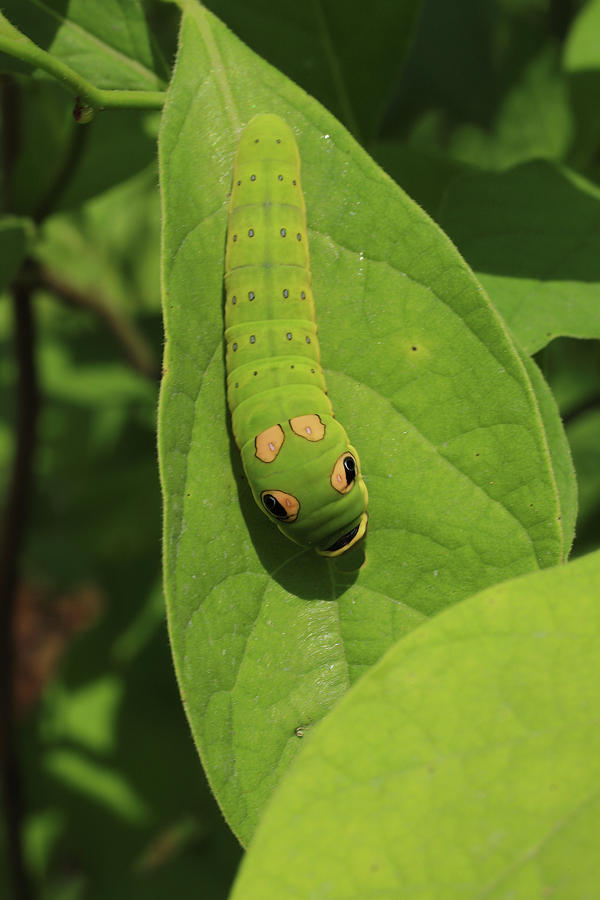
Spicebush Swallowtail Caterpillar Photograph by Karen Ruhl Fine Art
The spicebush swallowtail caterpillar will continue to eat and grow for 3-4 weeks until it sheds its skin a fifth and final time to pupate into its chrysalis. Before shedding its skin a final time, the caterpillar will search for the perfect spot. It often wanders away from its food to create a silk pad to attach itself to its surrounding.

A Spicebush Swallowtail caterpillar in Howard Co., Maryland (9/25/2013
This Spicebush Swallowtail (Papilio troilus) is generally black, and marked with broad, black hind wings bordered with pale, greenish spots.Hind wings on the male have a blue-green band, and the female has a blue shading. The Spicebush Swallowtail wing span is in the 3.5" - 4.5" range.
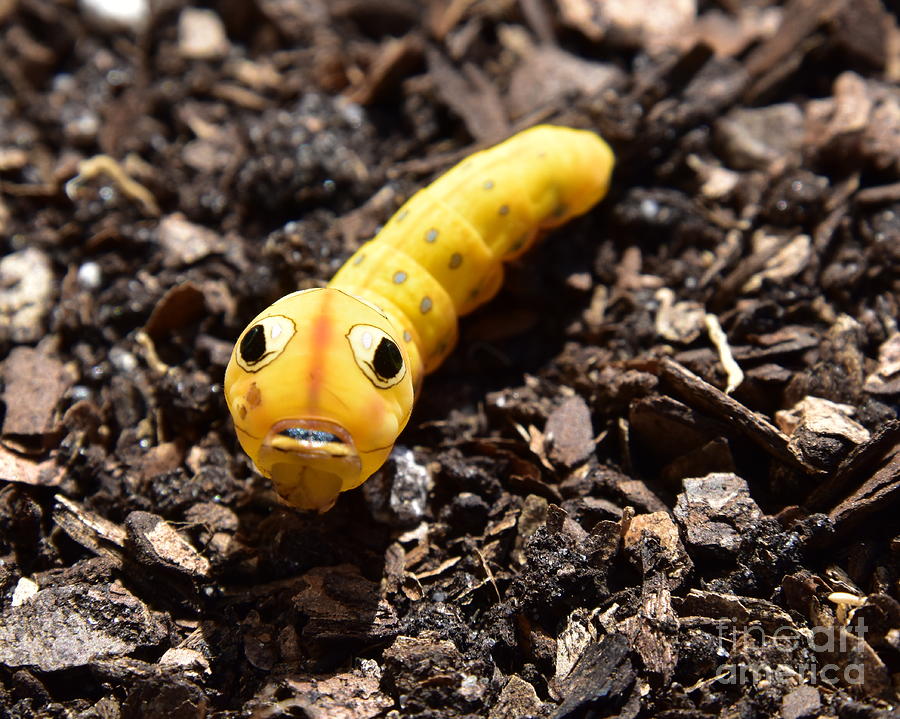
Spicebush Swallowtail Caterpillar Photograph by James Lloyd Pixels
Spicebush Swallowtails add a splash of green to Alabama's swallowtail color palate. Once known as Green-Clouded Swallowtails, males of the species were aptly named. Expanses of blue-green scales drift across their black hindwings, and green chevrons outline lower wing edges.

Spicebush Swallowtail Caterpillar (Papilio troilus) 07 One of God's
Still hiding in that leaf. I didn't get a picture of the next phase, in which the caterpillar gets even bigger and turns a yellowish-orange color before anchoring itself to something and shedding its final skin to emerge as a chrysalis. I did find several of those a few weeks later. Here is one right on the Spicebush.
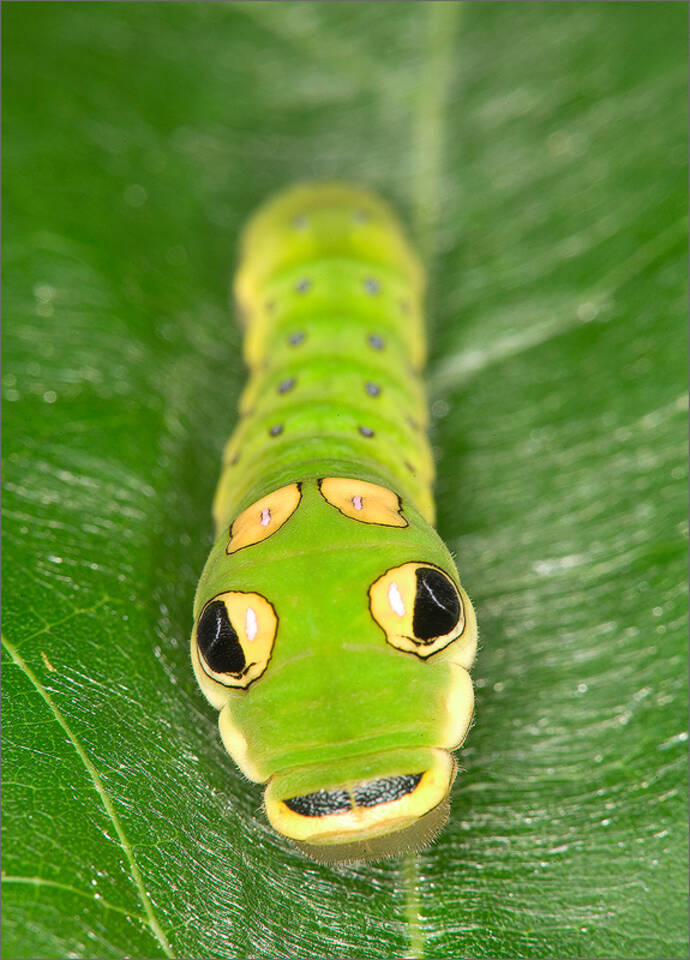
Spicebush Swallowtail Caterpillar Papilio troilus Patrick Zephyr
The spicebush swallowtail (Papilio troilus) is one of several butterflies in the Papilionidae family, whose range extends into the Northeast. The name is a nod to one of this butterfly's preferred host plants, although spicebush swallowtails count multiple species in the laurel family among their caterpillar hosts.

Spicebush Swallowtail Caterpillar
Papilio troilus, the spicebush swallowtail or green-clouded butterfly, is a common black swallowtail butterfly found in North America. [2] It has two subspecies, Papilio troilus troilus and Papilio troilus ilioneus, the latter found mainly in the Florida peninsula. [3]

Spicebush Swallowtail Caterpillar
Spicebush Swallowtail. Papilio troilus. Identification: Very large—about 4.1" (larger than Monarch), Above: Mostly black but with blue on HW and a row of pale (often pale bluish) spots along FW and HW margins. Male has a prominent blue-green "cloud" on the HW and more-prominent FW marginal spots. Both sexes lack pale spot near front.
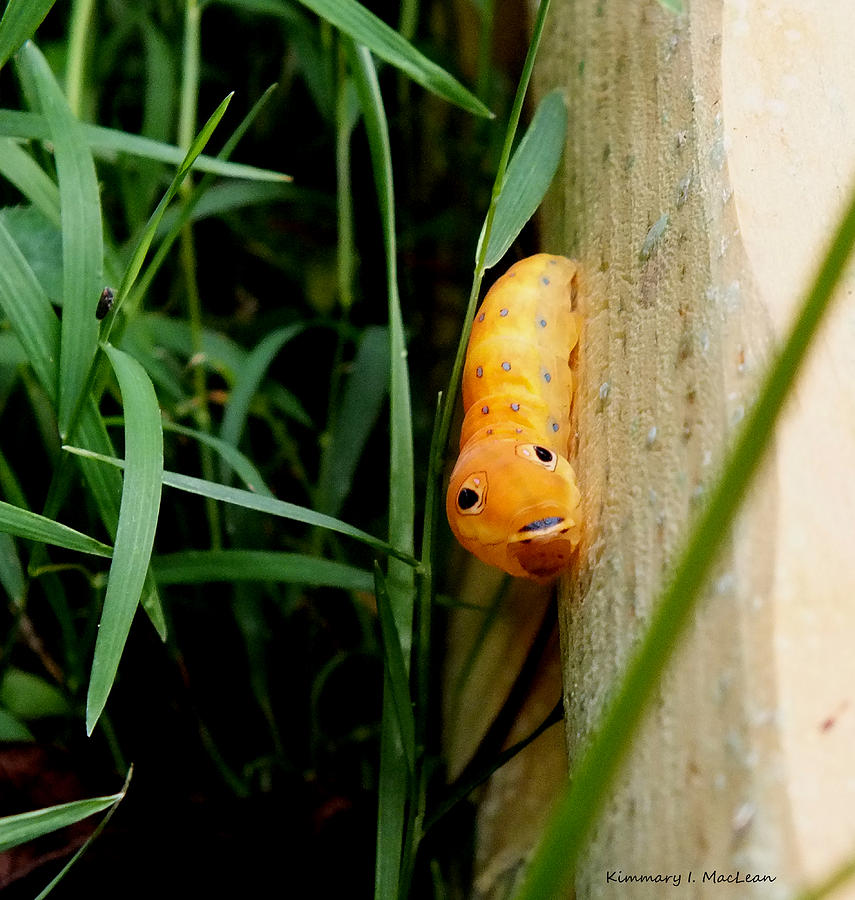
Spicebush Swallowtail Caterpillar Photograph by Kimmary MacLean
The Spicebush Swallowtail Caterpillar is a fascinating creature that turns into the striking black and blue Spicebush Swallowtail butterfly. Found primarily in the eastern parts of the United States, this caterpillar has some unique features that make it stand out among other species.

Spicebush swallowtail caterpillar 9 incredibly cute arthropods MNN
Description (Back to Top) Adults: The wingspread range is 92-124 mm (3.83-4.78 in) (Opler and Malikul 1998). The upper surface of the forewings is black with a narrow marginal row and a broader sub-marginal row of light yellowish spots. The upper surfaces of the hind wings also have the rows of spots, but they are light green in color.
Spicebush Swallowtail Caterpillar in SW Ohio r/insects
Males patrol in woods, roads and woodland edges to find receptive females. Females lay single eggs on underside of host plant leaves. Caterpillars live in shelters of folded-over leaves and come out to feed at night. Some chrysalids from each generation hibernate. ( 1) The first instar caterpillar measures 4-5 mm.
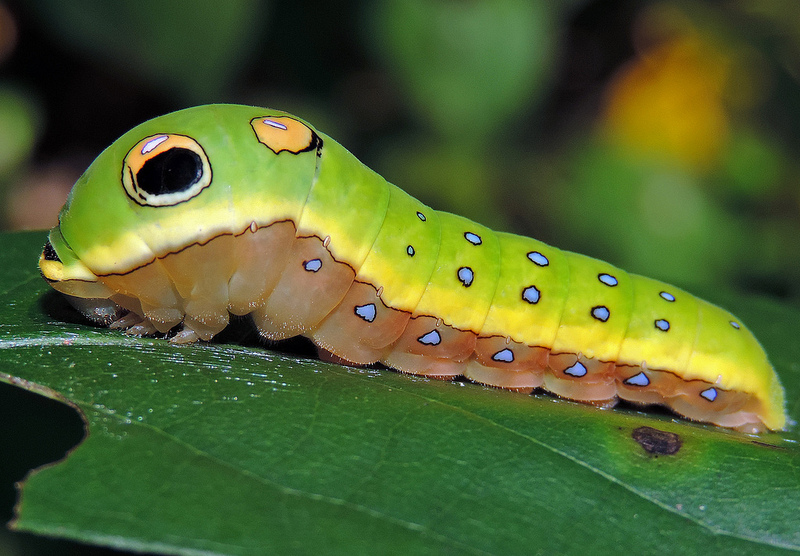
Maryland Biodiversity Project Spicebush Swallowtail (Pterourus troilus)
Spicebush Swallowtails are beautiful butterflies, whose caterpillars are one of my most favorite of all. The adults have a wingspan of 2.5 - 3.8 inches. Their range is most of the eastern half of the US, except extreme south Florida and Texas. Spicebush Swallowtail Host Plants